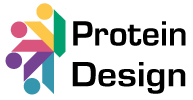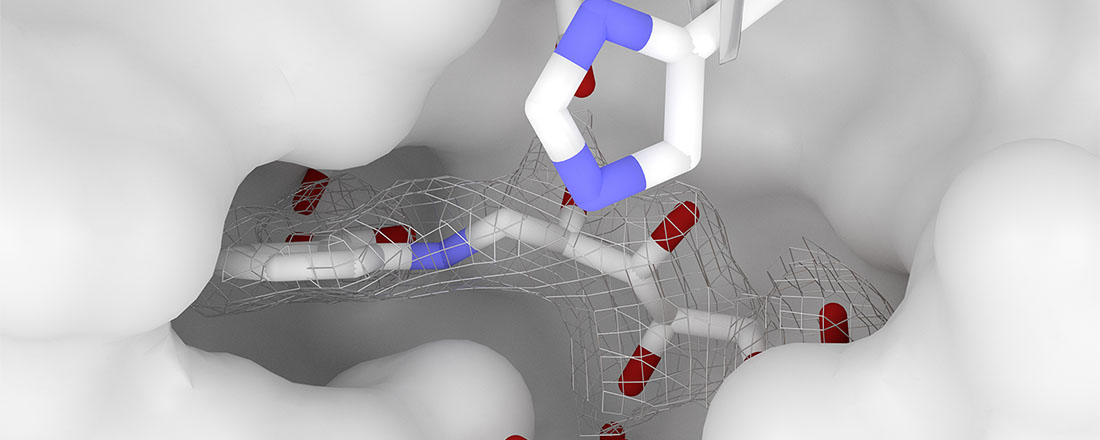Algorithms & Software
- AtligatorHide
-
ATLIGATOR: editing protein interactions with an atlas-based approach
ATLIGATOR is a computational method to analyse and design protein interactions with single side chains. It functions by detecting frequent interactions seen in known protein structures. ATLIGATOR is available at github or as a python package on PyPI with 'pip install atligator'
Kynast et al, 2022 (PubMed)
- PocketOptimizer 2.0Hide
-
PocketOptimizer 2.0 is a modular framework that enables the optimization of small molecule ligand-binding pockets based on force fields and exchangeable docking scoring functions.
- ProtlegoHide
-
Protlego for the automatic design of chimeras and their analysis
Protlego is a tool that enables constructing protein chimeras and its structural analysis. ProtLego is written in Python, so it facilitates that other scientists can extend it to their needs.
With Protlego, it is possible to go from a pair of PDBs that share a structural fragment in common, to build all possible chimeras between the two, rank them with the AMBER or CHARMM molecular mechanics forcefields, and analyze their structural features (hydrogen networks, salt bridges, hydrophobic clusters…etc.)
Accessible here: https://hoecker-lab.github.io/protlego
- PocketOptimizerHide
-
prediction of affinity increasing mutations in a protein-binding pocket
Version 1.2.0 - March 2016
Dependencies: all dependencies included except for python 2.7, numpy, tinker and matplotlib.
Providing binaries for Linux 64bit onlyDockerfile for installing automatically as Docker Container
Version 1.1.0 - March 2014
Dependencies: all dependencies included except for python 2.7.6, numpy, and matplotlib.
Providing binaries for Linux, Windows, and OS XVersion 1.0 - October 2009
Dependencies: BALL
- ScaffoldSelectionHide
-
searches large sets of protein structures for potential attachment sites of an enzymatic motif
Version 1.2.0 - February 2014
Dependencies: all dependencies included
Providing binaries for Linux, Windows, and OS X (incl. BALL & boost)Version 1.1.0 - December 2013
Dependencies: BALL 1.4.2, boost 1.55, lpsolve 5.5
Binary version for LinuxVersion 1.0 - October 2009
Dependencies: BALL 1.2, boost 1.55, lpsolve 5.5
Web Ressources
- Atligator WebHide
-
Atligator Web: A Graphical User Interface for Analysis and Design of Protein–Peptide Interactions
With ATLIGATOR, we created a tool to analyse three-dimensional binding patterns between amino acids. Since three-dimensional visualization is a crucial part of ATLIGATOR, we created ATLIGATOR web—a web server offering an intuitive graphical user interface (GUI) available at https://atligator.uni-bayreuth.de.
Kynast et al, 2023 (Link)
- FuzzleHide
-
Fuzzle: A web resource to identify and analyze natural protein building blocks
Proteins have evolved by replicating and recombining sub-domain-sized fragments. By using super-sensitive homology detection tools, we have identified over 1000 fragments that appear across the protein space. These fragments can be used as building blocks to construct novel proteins, mimicking the natural process. We have made these data available in our Fuzzle database:
Ferruz et al., 2020 & Ferruz et al., 2021
Accessible here: https://fuzzle.uni-bayreuth.de
- ProteinToolsHide
-
ProteinTools: A toolkit for protein structural analysis
ProteinTools is a web server for the analysis of different structural properties in proteins. It is possible to analyze hydrophobic clusters, hydrogen bond networks, salt bridges, and contact maps, in an easy to use interactive interface.
ProteinTools is accessible here: https://proteintools.uni-bayreuth.de


